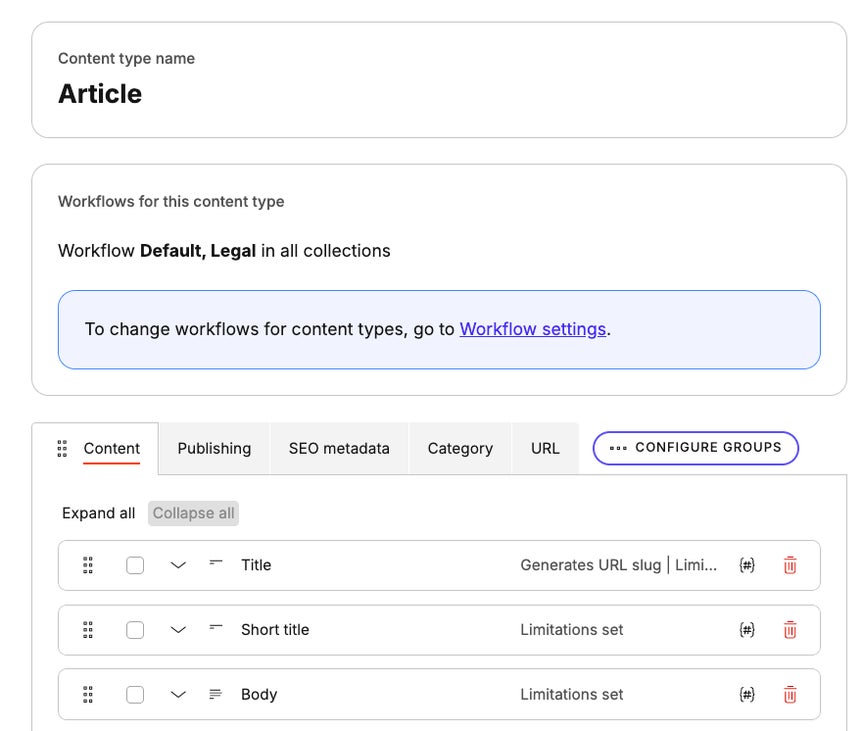Content groups
Streamline your content creators' work by making their authoring experience cleaner, easier to manage, and less overwhelming. You can achieve this by setting up content groups; a powerful tool for organizing elements within a content type.

